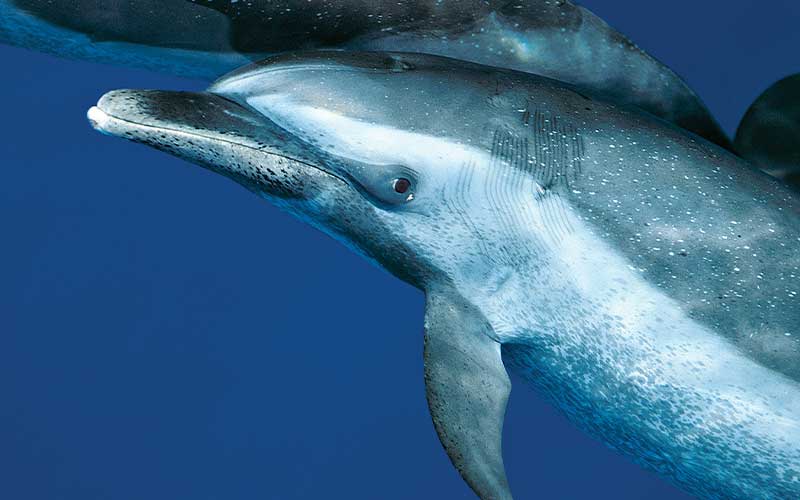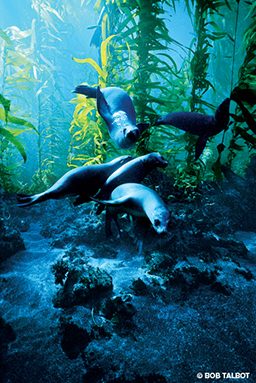“What can I do protect the ocean?” is the question I’m most asked in my travels. Divers share an intimate relationship with the sea. We witness both its beauty and its fragility. We take pictures, tell stories and bring others under the sea to share our adventures. We revel in the sea’s magnificence, are angered by its destruction and long for ways to protect it.
What can we do protect the ocean? Today, one of the many answers to that question rises to the top: Support National Marine Sanctuaries.
The National Marine Sanctuary System is one of our most powerful tools to protect special marine areas. Now more than ever they need our help to become everything the name implies.

So what is a National Marine Sanctuary?
The official answer goes something like this: The National Marine Sanctuary System represents areas of America’s ocean and Great Lakes environment that are of special national significance. The primary role of a marine sanctuary is to protect its natural and cultural features while allowing people to use and enjoy the ocean in a sustainable way. Most have regulations that prohibit activities like oil drilling or ocean dumping.
I have a slightly different answer: Sanctuaries are what you make them.
Many divers are familiar with the Florida Keys National Marine Sanctuary or the Monterey Bay National Marine Sanctuary, but few have experienced less-visited sanctuaries like Fagatele Bay National Marine Sanctuary, home of a coral reef ecosystem that fringes an eroded volcanic crater on the island of Tutuila, American Samoa. Fewer still have explored the frigid waters of the Great Lakes and the Thunder Bay National Marine Sanctuary in Alpena, Mich., home to more than 200 shipwrecks. About all these places have in common is that they have been designated sanctuaries. What sets them apart is what the designation means to local stakeholders. Some sanctuary supporters are passionate about the resource; others prosper by their protection.

Whatever your interest, you don’t have to be in a sanctuary very long to see why they are created: humpback whales nurturing their young, the bustle of relatively unspoiled coral reefs, shipwrecks that tell stories of our maritime history. What’s less obvious is that the level of protection each sanctuary is afforded is up to us. We, the public, define sanctuaries.
I’ve been an ocean advocate even before I started diving and taking pictures in my early teens. Since then I have worked with a broad range of environmental groups. I’ve seen what works and what doesn’t. I became directly involved with sanctuaries when I joined the board of the National Marine Sanctuary Foundation in 2004. I joined because I felt sanctuaries are the best matrix available to create effective marine reserves. Today, as the chairman of the board, I dedicate much of my time to telling the stories of these special places in films that I hope engage people and inspires them to take action.

Of all my great memories of diving in sanctuaries, none stand out more than the times an animal has shown me trust. Whether it’s a goliath grouper posing for the camera in the Keys or a harbor seal nosing the lens port in the kelp forests of Monterey Bay, the trust of a wild animal has always been precious to me — it always leaves me with a deep sense of obligation. That obligation to the sea, and future generations, is one we all share, but unfortunately, honor sparingly.
Never was that more apparent than during last year’s BP oil spill in the Gulf of Mexico.
As our presumptions about the safety of offshore oil drilling evaporated, NOAA’s sanctuary staff worked tirelessly to safeguard two nearby sanctuaries from harm. The Florida Keys and the Flower Garden Banks (100 miles off the Texas and Louisiana coasts) were within striking distance of the spill. Fortunately, as of today, no damage to these critical areas has been observed.
Forty-one years before, an oil spill off Santa Barbara, Calif., was one of the catalyzing events for the modern environmental movement and our current fabric of environmental laws. Among those laws was the National Marine Sanctuaries Act, passed (under Title III of the Marine Protection, Research and Sanctuaries Act) in 1972. The Act was designed to protect our waters and cultural resources from oil and gas exploration, overuse, exploitation and denigration.
Since that time the sanctuary system has come a long way. It has developed far beyond a tool to protect waters from destructive activities. It is has become a network of productive marine communities for recreation and sport as well as an evolving haven for wildlife. Yet, despite their successes, sanctuaries need our help now more than ever.

In these tough economic times sanctuaries are facing growing needs and evolving challenges. We need to strengthen NOAA’s capacities to ensure their future health. We must streamline the process of the designating sanctuaries, increase protection of newly designated areas, and improve the public’s understanding of these nationally significant places. We need to continually expand the number of marine areas protected for future generations and manage them in a way that will sustain both recreation and wildlife.
The National Oceanic and Atmospheric Administration (NOAA) Office of National Marine Sanctuaries (ONMS) serves as the trustee for a system of 14 marine protected areas encompassing more than 150,000 square miles of ocean and Great Lakes waters from Washington state to the Florida Keys, and from Lake Huron to American Samoa.
What Can You Do?
What can you do to help National Marine Sanctuaries?
- Contact your local member of Congress and ask that he/she support the National Marine Sanctuary System and increase funding for additional monitoring and management.
- Enlist others with your passion. Let them know that protecting and strengthening sanctuaries and creating new protected areas are vital to address broader ocean issues.
- Become involved with local sanctuary groups.
- Make your sanctuary all it can be.
Sanctuaries need us to take action now. The efforts of every individual often come together to make a huge collective difference.

© Alert Diver — Q1 Winter 2011